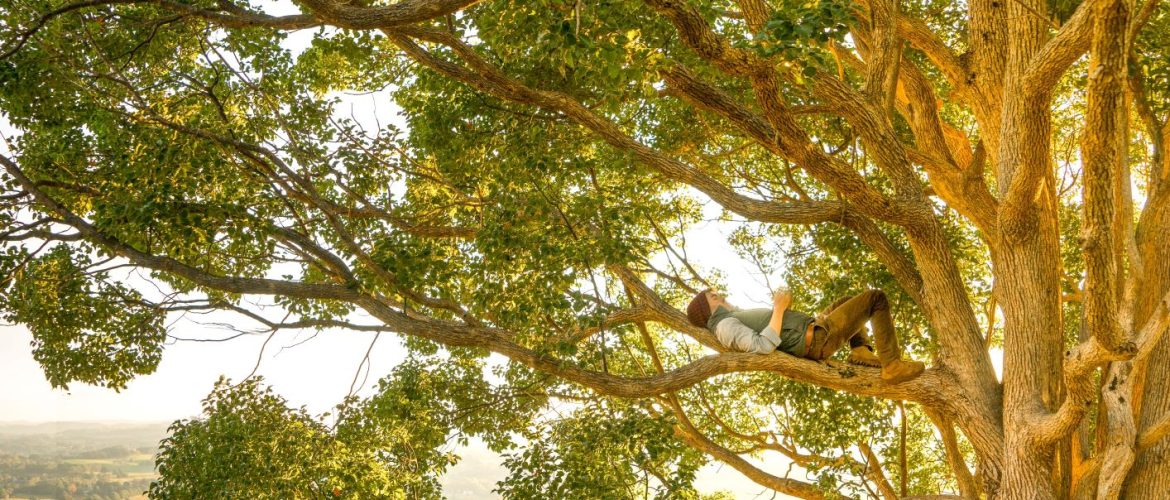In the restoration of the planet, gifted people have a special role to fulfill. Via our project I Heart Earth, we are exploring ways to do help each of us reconnect to Nature, process our grief, find our voices and take collective action. In this article, you'll find our first 12 meditations which include education for reawakening your connection with the Earth's ecosystems and inspiration for taking action. For more meditations, talks, education and resources on climate psychology from Jennifer Harvey Sallin, follow us at Facebook & YouTube.
meditations written by Jennifer Harvey Sallin & Karin Eglinton
Many of us are grieving the loss of the Earth's ecosystems, the changing of the climate, and the overall state of our planet and the political and cultural systems which have harmed it. As gifted people, we can feel especially concerned and to some degree powerless, as we are systemic thinkers who can see the longer-term implications of present-day choices, but we don't necessarily inhabit positions of power in which we could make different choices for the collective.
We started our project I Heart Earth in June 2019 as a way to explore avenues we can come out of the state of powerlessness through embodied reconnection with the Earth and through building awareness of the various avenues of change-making. During our first three months, we completed 12 weeks of group meditations which encourage the kind of reflection, attention and cultivation required to reconnect ourselves with the Earth and to open our minds to new options for action. Below, you can read our first 12 meditation texts, watch our videos, explore our resources and take time to contemplate and meditate from wherever you are.
In the three years that have passed, we have provided talks, education, and other meditations that you can find at our Facebook page and our YouTube Channel.
1. (Re)connecting with the Earth
The focus of our first meditation is to (re)connect with the Earth as a dear friend, a loved one who is part of our lives. Representing our planet as an "it", an object (or a complex collection of objects) “out there” makes it hard to connect from our hearts and emotionally feel our very real bond with it. Yet the Earth is our friend. If friendship is considered equal encouragement and challenge, Earth gives us resources to exist and demands that we strive to be our best selves, in order to maintain a friendship with us. Our relationship with Earth is a generative friendship between living beings, and it is this feelings awareness we want to cultivate together today. Do you tend to, as Martin Buber says it, relate to Earth from an “I-it” perspective or an “I-thou” perspective? Do you feel your connection with the Earth as a living being (a “thou”) rather than an object (an “it”)?
In this meditation, we invite you into a dialog with the Earth. Maybe it’s a wordless dialog: you go out into your garden and reconnect with the ground and simply stay present with your friend in silence. Maybe it’s an active conversation, where you tell the Earth about you and what you’re experiencing now, and listen to what it has to tell you about itself and what it’s experiencing now. Or maybe you spend your time remembering how the Earth supported you in times of joy and pain; or take the time to apologize for the hurt you’ve caused it, even unintentionally, via your past actions.
Ask yourself, how would you choose to spend time with a friend? And how would you choose to spend time with a friend who is in a state of personal crisis? What would you tell that friend?
2. Cultivating Mutual Nourishment
The focus of this meditation is to experience and cultivate mutual nourishment with the Earth. Our relationship with food is an essential way in which we connect with the Earth on a day-to-day basis: we take in the Earth's nourishment into our bodies, and everything we take in as food originates in the natural world. While we may not think about it often, we are also constantly nourishing countless other living beings through our very existence. Nourishment comes in other forms too: connection with loved ones, human and non-human; taking in and creating beautiful and useful things, acts of service for one another. At the core, nourishment is about providing (ourselves or others) what is needed to thrive.
It's easy to feel guilt, shame and overwhelm, however, with the many cultural narratives and disconnected practices we have around food -- and by extension, our disconnection from other forms of nourishment. Yet it is natural to feel pleasure in the process of nourishment -- think of how you feel when you eat your favorite meal, or prepare something delicious for someone you love. We know we feel nourished because natural feelings of pleasure and satisfaction arise from the exchange. We invite you to tune into these feelings, as a way to nurture and deepen your pathways of positive give-and-take with the Earth. Especially if your relationship with feeling nourished, or giving nourishment from your heart, feels fraught, guilt-ridden, confusing, scary, threatening or otherwise impaired, we invite you to ground in the most basic feelings of pleasure and gratitude at giving and receiving.
During the meditation, we ask ourselves, "How does the Earth nourish me?" and "How do I nourish the Earth?". Invite yourself to explore these two sides of your reciprocal connection with the planet. For example, you may be surprised by the idea that your very presence is nourishing and positive to the planet: see where that takes you. Or, you may be the kind of person who feels they need to be "giving" and "doing" constantly to offset the amount of damage we have done to the Earth -- imagine relaxing into deep feelings of satisfaction and gratitude, and really taking in what you receive from the Earth day to day.
3. Generative Compassion for the Earth
The focus of this meditation is to experience and cultivate Generative Compassion with and for the Earth. When we connect with our inner sense of compassion, it is easy to become focused on the suffering states we are cultivating compassion for; it is natural for our awareness to land on the hurt, the wrongs, the sense of disconnection, apathy, and grief. It is also very easy for our attention to become fully ensnared by the suffering we observe, and as we empathically resonate with it, our awareness may be, in a sense, "taken over" by suffering.
During this meditation, we will practice how to strengthen our "meditation muscles" so that our compassionate intention and attention become generators of life-giving qualities (such as spaciousness, health, hopefulness and more) as we meditate. In this way we are able to be in contact with the field of collective pain without becoming overwhelmed by it, and we are able to hold a space where healing can happen.
Here is the guided audio meditation prepared and spoken by Karin Eglinton:
4. Transforming Eco-Duty into Joy
The focus of this meditation is on transforming our experience of "duty" into joy, as we take eco-action for the Earth. Many of us find that we "have to" recycle more, "have to" take the train instead of the plane, "have to" stop buying extra clothes - or whatever action we're taking for the environment. Of course, "having to do something" out of duty is one way of looking at any task. But that's just one way. At the other end of the spectrum, there is joy in getting the benefits from the task.
An easy analogy is parenting: you can feed your kids because you "have to" as their parent; or you can find joy in preparing meals they like and using the time you eat together as valuable and joyful connection-time. Another analogy is gardening: you can focus on "having to" water your plants so they don't die, or you can enjoy the opportunity to be in the sun, admire the sprouts or flowers or vegetables that are growing, take the time to breathe in the fresh air, and savor your quiet, grounded moment with the Earth.
Many of the people we've spoken with who are taking action for the environment, have told us that they are surprised how much joy they have been feeling in "getting to" return to a certain kind of simplicity in living. What started out feeling like "have to's" have become "get to's". They get to rediscover skills they lost or passions they had, which have been reignited by current urgency; they get to reconnect to a living, breathing relationship with the planet; and importantly, they get to form deep and meaningful connections while banding together with others to confront the crisis.
In this meditation, we focus on discovering how the duties of responding to the climate emergency are also sources of personal and interpersonal joy, rediscovery and renewal - whether that be rediscovery of your connection to the earth, to humanity, to your neighbors; or to memories, skills, or passions; or discovery of new sources of joy you couldn't have previously imagined. During our meditation, we'll take time to "incubate in" and celebrate together about that joy, as it continues to generate in turn more strength and joyful opportunities within and for us, individually and collectively.
For this meditation, Jennifer Harvey Sallin & Karin Eglinton prepared a video discussion on the topic:
5. Gratitude for those on the Front Lines
In this meditation, we focus on gratitude for those on the front line of climate change research, education, legislation, policy, advocacy and activism. As the article in Mother Jones, It’s the End of the World as They Know It: The distinct burden of being a climate scientist, puts it: "They are on the front lines of contending with the fear, anger, and perhaps even panic the rest of us will have to deal with". While many of us only incorporate climate knowledge into our daily lives as lifestyle changes, climate scientists, legislators, policy-makers, activists and crisis responders are living "in the fire", so to speak, 24/7. Doing this work doesn't come with an automatic therapist, or a manual for how to handle all the emotional overwhelm of grief and frustration that is a part of it.
In this meditation, we take time to really feel our gratitude for everyone on the front lines, taking the worst of it for all of our benefit. As a preparation for this meditation, we invite you to (re)read the Mother Jones' article linked above and allow it to guide your reflections during your meditation hour -- not toward pity, but into gratitude. Take the time to feel the thankfulness that comes knowing people are looking out for you, your safety, and the safety of your (global) family and habitat; that they are enduring extreme pressure and pain in order to defend, protect and care for you, via caring for the planet you live on.
If you happen to be a person on the front line yourself, take the time to be grateful for yourself, for all the effort you are putting in, and open up a space to feel and receive our deepest gratitude as well. Working on the front lines of any crisis can be an extreme challenge, and it can only be sustainable when the work is seen, recognized and appreciated, and those who are doing the work are supported by a caring, conscious and attuned web of people around them.
6. Simple, Sensual Reconnection with Nature
On a day to day basis, we're often so immersed in virtual realities -- whether it's social media, or the "virtual" aspects of our workplace and what needs to get done, sitting at a computer, planning the logistics of our everyday, or even just being lost in thought -- that it's increasingly easy to lose touch with our senses. Yet our sensory reality can provide us with deep pleasure and grounding, and connection with our own aliveness. As we allow the sensory and sensual aspects of our experience to move us, we become more connected with our bodies and with the living world that surrounds us. There is a simplicity in getting in touch with our senses that is deeply centering and soothing for our nervous system, and when our nervous system is grounded, it is easier to feel connection with nature, with others and with life; and it serves as a building block for making holistic decisions about how we respond to the climate emergency both individually and collectively. In this way, getting in tune with our senses creates a "virtuous cycle" of joy, connection, and wisdom in action.
Here is a guided meditation on this topic from Avalon Meditations:
7. Nervous System Regulation in States of Sustained Crisis
The climate emergency is what is called a "sustained emergency": it's not responded to and resolved in one day or even one year. It is a particular kind of long-term challenge that requires a particular kind of sustainable psychological response. It calls for us to develop high levels of resilience, compassion, and nurturing ways of relating to ourselves as a path to staying engaged and well over the long term.
In this meditation, we practice the nervous system regulation work that is a key part of staying healthy and engaged in a long term crisis. Jennifer Harvey Sallin leads us, via a recorded video, in a 45-minute deep, restorative meditation practice to replenish and re-connect with the stillness within. Through her guidance, we touch and enter into a holding space of wise, patient compassion, and thus entrain our nervous systems to our own inner healing and restorative mindsets.
8. A Walking Meditation on Home
"Sanctuary is the place we can go when our lives are under threat, where we can consider love in the midst of oppression. It's a place for those who speak a language not of the dominant culture, a place where anyone can say, "I am home."
~ Zenju Earthlyn Manuel, "Sanctuary: A Meditation on Home, Homelessness, and Belonging"
Home is the place where we feel safe and cared for; a place where we belong. In considering the earth as our home, the current climate emergency is leading many of us to feel a deep sense of threat to both our physical and spiritual being. Through the practice of meditation, we can explore an intimate connection to the earth as our true home - a sanctuary in the midst of chaos. In this way, our safe and caring home is with us wherever we go, offering refuge and nourishment to ourselves and the world around us.
During this meditation, we will be doing a walking meditation as we explore a deep connection to the earth as home. Kelly Pryde of our partner project the Gifted Mindfulness Collective leads us via a guided audio meditation that you can listen to ahead of time to get a feel for the practice, or let it guide you as you walk during your meditation time.
9. Awakening to Action
The Climate Emergency is a crisis so vast that it's hard to grasp, both emotionally and cognitively, and easy to let ourselves be carried by the inertia of our lives as they are, even when we're aware that change needs to happen. Navigating it requires every single one of us to respond, to stop "business as usual" and rise up to the challenges in front of us. For this meditation, we invite you to prepare to take the next most effective step you are able to, in order to be part of the solution to the Climate Emergency. Using Bess Herbert's essay, Facing the climate emergency — a personal message to ordinary folk, as a jumping off-point for reflection, this meditation opens a space where we allow ourselves to see where we are on the awakening-to-action spectrum.
- Awakening: This stage is about internally facing the truth of the Climate Emergency, and facing the feelings and experiences that come with it, as well as its impact in our outer lives.
- Talking About It: This stage includes breaking the taboo and opening up the conversation with others (family, friends, co-workers and others in our social circles), so that we are "awake together". Talking about it with others includes talking about our feelings and internal experiences of the Climate Emergency as well as discussing action-steps.
- Taking Action: This stage includes finding effective action steps personal lifestyle changes as well as collective level political action and advocacy.
From there, we let this awareness guide us to intuitively ascertain what our next personal steps are to (getting ready to) make our contribution.
10. Understanding Forests
If you're a parent, you can feel deeply motivated to care for your children; but if you don't know much about how kids grow and what they need, you will be extremely limited in how well you are able to physically, emotionally and socially care for them. Motivation is not the same as knowledge, and both are needed in balance to understand what you are caring for, and what it needs as its own unique, autonomous being in the world.
Similarly, we are watching the forests in Amazonia and other places around the world burn right now, feeling deeply motivated to care; but many of us are relatively ignorant about what forests really are, exactly how trees operate in community, and what they need. This is a case where we need to understand what we are caring for, advocating for, and defending, so that we can do it competently and wisely. It is a wake-up call to those of us who know computers better than trees, social networks better than tree networks, and the online/virtual/modern world better than the physical/ancient/natural world. It's an invitation from Nature to more deeply understand her.
For this meditation, we spend time learning about trees and forests, how they actually work, and what they need from us in order to thrive. The following suggestions are perfect jumping-off points for our meditation time together. We highly recommend watching this talk by Suzanne Simard:
And reading:
- The Hidden Life of Trees: What They Feel, How They Communicate—Discoveries from A Secret World, by Peter Wohlleben
- How Forests Think: Towards an Anthropology Beyond the Human, by Eduardo Kohn
- The Overstory, by Richard Powers
11. Turning Toward Climate Grief
"It is important to name climate grief, to validate it, and to rediscover or create new ways of working through it. And just as human grief, for millennia, has been a relational, group process (through funerals, wakes, shiva, religious practices, public mourning, and support groups), climate grief may be best addressed, for many, in a group setting".
During this meditation, we take some time and space to meet our climate grief, at whatever stage we find ourselves (denial, anger, bargaining, depression, acceptance). In preparation, please read and reflect on this excellent, comprehensive resource from Climate and Mind, quoted above and below: What is Climate Grief?
We also recommend this beautiful article: I have felt hopelessness over climate change. Here is how we move past the immense grief
We use this meditation time to root more deeply into our connection to the planet and its precious life-web and to come together in solidarity to acknowledge our particular expression of climate grief at this time. As Climate and Mind reminds us: "By embracing our love for nature and for humanity, even in the face of great loss and pain, our grief can inspire us and empower us." Let's allow it to open our hearts, and inform and deepen our commitment to the restoration of our world.
12. Seeing the Invisible
When we imagine the climate emergency, we focus on the things we can see: the oceans, the animals, trees, humans...but most of us forget about the invisible (to the naked eye) microorganisms that make all of the visible world alive. All living things are made up of, and dependent on microorganisms. We cannot survive without these tiny living beings, the scale of whose complex universe we can only see under a microscope. They create the oxygen we breathe and help decompose dead matter to turn it back into soil nutrients which feed trees and plants. Types of microorganisms are: bacteria, archaea, protozoa, algae, fungi, viruses, and multicellular animal parasites (helminths). Their ecosystems (called microbiomes) are the foundation of the food chain, and the rapidly changing conditions of the Climate Emergency are powerfully disrupting their ecosystems, and by extension are putting the life that their ecosystems sustain (including ours!) at risk. It is of utmost importance that we include the microbiomes of our planet in our understanding and calculations of what is happening in our world now.
During this meditation, you are invited to connect to the microbiomes of Earth - including our own micro-ecosystem in our bodies - to get to know them, pay them due respect, and gain awareness of their needs. For your meditation preparation, here are some resources for you to get to know the Earth's microbiomes and microorganisms in their beauty and complexity - as well as the real risks associated with humans' conscious and unconscious disruptive actions toward them.
- We highly recommend reading this scientific paper: Scientists’ warning to humanity: microorganisms and climate change
- Since the above is a rather technical paper, here is a shorter one which has much less information, but still gives an idea of what we're exploring: Long Live Microbiomes!
We also highly recommend watching the following talk by Dr. David Montgomery:
Follow us on Facebook, YouTube, Twitter & Instagram











Ecological Grief & Healing - InterGifted
[…] 12 Meditations for the Earth […]
Ecological Grief, Trauma & Finding Your Role - Rediscovering Yourself
[…] 12 Meditations for the Earth […]